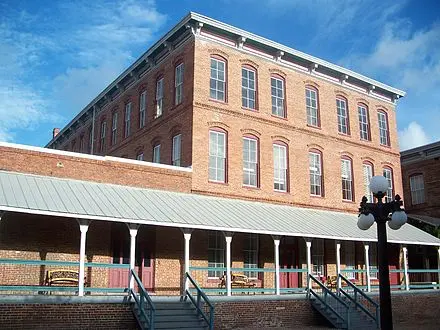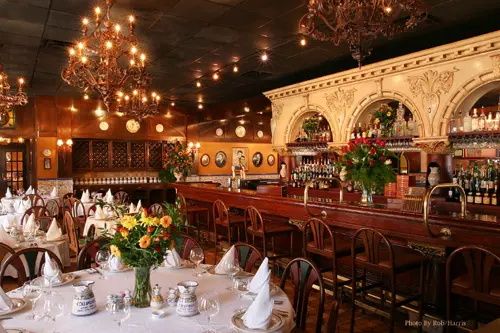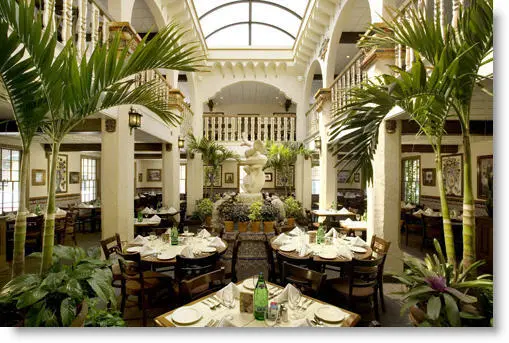Henry Plant was extending his railway system into the small pioneer settlement of Tampa, Florida, in the 1880s. In addition to making Tampa more accessible by rail, Plant expanded the port and built luxury hotels in the area.
This new infrastructure enticed Cuban businessman Vicente Martinez Ybor to move his cigar manufacturing operation from Key West to the Tampa area, establishing Ybor City.
Ybor’s friend, Gavino Guitierrez, had suggested that the Tampa area would be a great place to build an expansive new cigar operation. After visiting Tampa, Ybor agreed. “So he came up and he bought 40 acres, and started to lay out the plans for his cigar town,” says Elizabeth McCoy, curator of programs and education for the Ybor City Museum.
As Ybor built his city based around cigar manufacturing, Henry Plant continued developing the Tampa area as well. Plant’s Tampa Bay Hotel, designed in a distinctive Moorish Revival style, is now the University of Tampa.
Ybor established his town in 1885, and it was annexed by Tampa in 1887.
“In a period of about one year, he created a grid for the city,” says Chantal Hevia, president of the Ybor City Museum Society. “He built housing for the cigar workers and then he brought them from Cuba and Spain, and ultimately from a couple of little towns in Sicily.”
Although primarily populated by Cuban and Spanish cigar workers, Ybor City was a multi-ethnic community.
“There were groups that came from Sicily, but there were also small groups from Germany and a Romanian Jew contingency that also found Ybor City and contributed to it,” says McCoy. “Not only in the cigar industry, but in the businesses that helped support the city.”
When Stetson Kennedy traveled throughout Florida in the late 1930s and early 1940s collecting oral histories, he recorded interviews in Ybor City. In his book Palmetto Country, Kennedy writes about the unique community institutions of Ybor City, including mutual aid societies and social clubs.
“They provided a social outlet and sense of community for the people,” says McCoy. “They also provided some other vital services; banking, medical services, and this was all done in a cooperative setting. When you paid your dues to be a member of the club, by virtue of doing that, you gained access to the hospitals and the pharmacies and the banking facilities.”
In the early decades of the twentieth century, the hospitals associated with the two major Spanish mutual aid societies, El Centro Asturiano and El Centro Espanol, were deemed the most modern and well-equipped in the region.
“It was cradle to grave service,” says Hevia. “The minute someone was born into a family they fell under the plan of the head of the household. This was for twenty-five cents a week. They would get not only health care, but the Spaniards alone had four cemeteries, Italians had their own cemeteries. You were taken care of. If you lost your job, they would come to your rescue. It was a great way to socialize with your own and be cared for in a new land that was probably inhospitable at first.”
From the late 1800s through the first three decades of the twentieth century, the diverse residents of Ybor City thrived. A period of economic decline began in the 1930s. The city’s hand-rolled cigars had difficulty competing with less expensive machine-rolled cigars and the increasing popularity of cigarettes.
After World War II, returning soldiers moved their families away from the urban center into newer housing developments. During the 1960s, many historic structures in Ybor City were demolished, some to make way for Interstate 4.
One institution that held on through it all is the Columbia Restaurant, which opened in 1905. The Columbia is still an anchor for the community.
“It brings a lot of tourism to Ybor City,” says Hevia. “We have a lot of other historic places where you can get traditional and typical foods, but it is the iconic one.”
As historic preservation efforts emerged in the 1970s and ‘80s, Ybor City was revitalized. Many of the core elements that make the community unique have remained in place for more than a century, and can be experienced and enjoyed today.
Dr. Ben Brotemarkle is executive director of the Florida Historical Society and host of the radio program “Florida Frontiers,” broadcast locally on 90.7 WMFE Thursday evenings at 6:30 and Sunday afternoons at 4:00, and on 89.5 WFIT Sunday mornings at 7:00. The show can be heard online at myfloridahistory.org.



